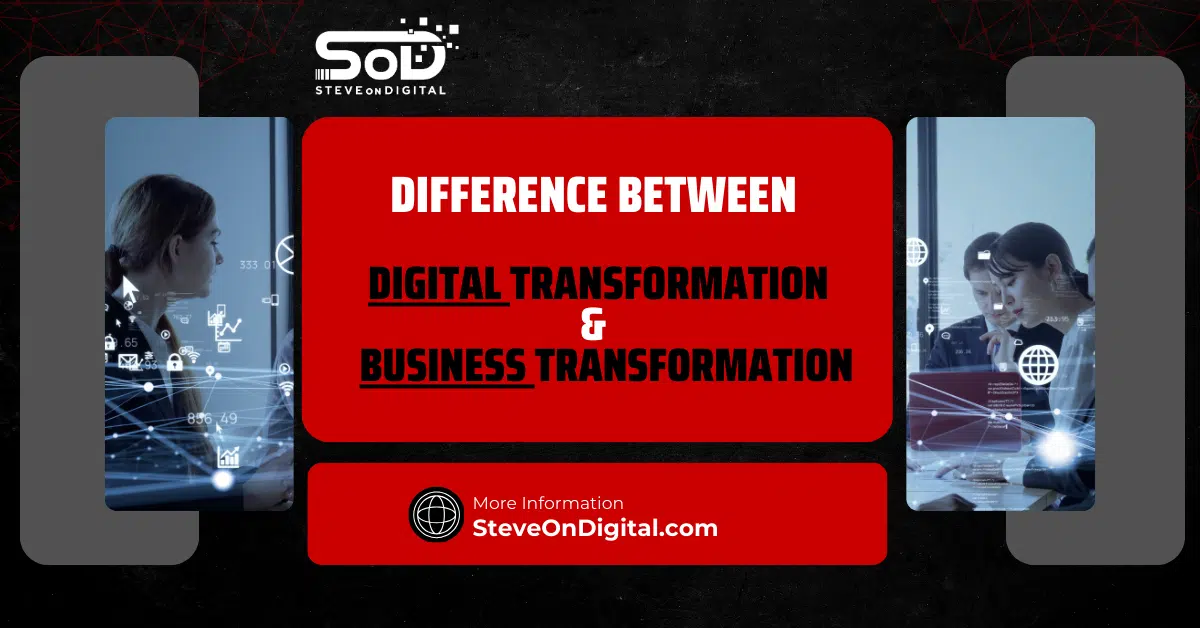Creating a coordinated strategy helps businesses streamline operations, align goals, and save time and resources, ultimately driving success.
I, Steve Johnston, am a Digital Transformation Specialist with expertise in helping small and medium-sized businesses navigate the digital landscape. My background in electrical engineering, an MBA, and a master’s in Project Management allow me to offer practical advice and insights to SMEs.
Understanding Coordinated Strategy
To create a coordinated strategy, you need to understand what it entails and why it is vital for your business.
Definition And Importance
A coordinated strategy aligns various business functions to work towards common goals and objectives. It involves strategic planning, project management, and continuous monitoring. This strategy ensures that all departments are on the same page, reducing conflicts and improving efficiency. For example, in my experience, when all teams understand the common goal, it reduces duplicated efforts and wasted time.
Key Benefits
A well-executed coordinated strategy brings numerous benefits:
- Improved Efficiency: Streamlining processes and eliminating repetitive tasks enhances overall productivity.
- Better Resource Management: Allocating sufficient resources where they are most needed ensures smooth operations.
- Enhanced Decision-Making: With clear communication channels and valuable insights from data analysis tools, decision-making becomes more informed and effective.
Steps To Create A Coordinated Strategy
Here are the detailed steps I follow to create a coordinated strategy.
Identifying Business Goals And Objectives
Start by clearly defining your business goals and objectives. This step is critical as it lays the foundation for your strategy. Make sure these goals are specific, measurable, achievable, relevant, and time-bound (SMART).
Conducting A Strategic Planning Process
The strategic planning process involves evaluating your current position, identifying opportunities, and setting a clear path forward. Here’s how I usually approach this:
- Assess the Current Situation: Analyze your business’s strengths, weaknesses, opportunities, and threats (SWOT analysis).
- Set Strategic Objectives: Based on the SWOT analysis, set strategic objectives that align with your business goals.
- Develop Action Plans: Create detailed action plans outlining how each objective will be achieved.
| Step | Description |
| Assess Current Situation | Analyze strengths, weaknesses, opportunities, and threats (SWOT analysis) |
| Set Strategic Objectives | Define objectives based on SWOT analysis |
| Develop Action Plans | Outline detailed action plans to achieve objectives |
Involving Key Stakeholders
Involving key stakeholders in the planning process is essential. This includes team members from various departments, as their input can provide valuable insights. In my practice, I always ensure that all relevant parties are engaged in the planning process to avoid silos and foster collaboration.
Essential Components Of A Coordinated Strategy
A coordinated strategy comprises several critical components.
Clear Communication Channels
Effective communication is the backbone of a coordinated strategy. Establishing clear communication channels ensures that everyone is informed and aligned with the strategic goals. Regular meetings and updates are essential to keep the team on track.
Resource Allocation
Efficient resource allocation is crucial for achieving your strategic goals. This involves distributing sufficient resources, such as time, money, and personnel, to where they are most needed. I always emphasize the importance of proper resource allocation to avoid bottlenecks and delays.
Horizontal Coordination
Horizontal coordination refers to the collaboration across different departments. It’s essential to break down departmental barriers and promote teamwork. For instance, I’ve seen how effective horizontal coordination can lead to innovative solutions and timely completion of projects.
Role Of Project Management In Strategy
Project management plays a crucial role in integrating and supporting a coordinated strategy. It ensures that all strategic initiatives are executed efficiently and effectively, leading to project success and the achievement of business goals. I’ve witnessed how robust project management practices can transform ideas into actionable plans, driving progress and innovation.
Project Manager’s Role
A project manager is at the heart of strategy execution. Their responsibilities include:
- Planning and Coordination: They outline the project scope, objectives, and deliverables, ensuring alignment with the strategic planning process.
- Resource Management: Allocating sufficient resources, including time, budget, and personnel, to meet project goals.
- Communication: Maintaining clear communication channels with stakeholders to keep everyone informed and aligned.
- Risk Management: Identifying potential delays and mitigation strategies to keep the project on track.
A good project manager is like the captain of a ship, steering the team through the strategic planning process to reach the desired outcomes.
Tracking Project Progress
Monitoring and tracking project progress is essential for strategy execution. Here are some methods I find effective:
- Milestones and Deliverables: Break the project into manageable sections with clear milestones.
- Gantt Charts: Use visual representation tools like Gantt charts to track progress and timelines.
- Regular Meetings: Conduct regular meetings to review progress, address potential issues, and adjust plans as needed.
- KPIs: Establish key performance indicators to measure success and track progress against objectives.
By keeping a close eye on project progress, you can make informed decisions and adjustments to stay on course.
Utilizing Data Analysis Tools
Data analysis tools are indispensable for creating and executing a coordinated strategy. They provide valuable insights that inform decision-making and strategy refinement.
Types Of Data Analysis Tools
There are various data analysis tools available, each serving different purposes:
- Business Intelligence Tools: Platforms like Tableau and Power BI help visualize data and identify trends.
- Statistical Analysis Software: Tools like SPSS and SAS for in-depth statistical analysis.
- Predictive Analytics: Software like RapidMiner and KNIME for forecasting future trends and outcomes.
| Tool Type | Examples | Purpose |
| Business Intelligence | Tableau, Power BI | Visualize data and identify trends |
| Statistical Analysis | SPSS, SAS | Conduct in-depth statistical analysis |
| Predictive Analytics | RapidMiner, KNIME | Forecast future trends and outcomes |
Each tool has its strengths and can be used to gain different types of insights.
Benefits Of Data Analysis
Data analysis offers several benefits:
- Informed Decisions: Helps in making data-driven decisions that are more accurate and effective.
- Strategy Refinement: Allows continuous improvement of strategies based on data insights.
- Identifying Trends: Detects emerging trends that can be leveraged for business growth.
- Performance Tracking: Monitors key performance indicators to track progress and success.
I’ve seen how leveraging data analysis tools can turn raw data into actionable insights, driving better strategy execution and project success.
Setting Key Performance Indicators (KPIs)
Establishing KPIs is essential to measure the success of your coordinated strategy. They serve as benchmarks to track progress and evaluate performance.
Identifying Relevant KPIs
When selecting KPIs, consider the following criteria:
- Alignment with Business Objectives: Ensure KPIs are directly tied to your strategic goals.
- Measurable and Specific: KPIs should be quantifiable and clear.
- Achievable and Realistic: Set targets that are challenging yet attainable.
- Time-Bound: Define a timeframe for achieving each KPI.
| KPI | Description | Example Target |
| Customer Satisfaction Score | Measures customer satisfaction with products/services | Achieve an average score of 8/10 |
| Sales Growth Rate | Measures the rate of increase in sales over time | 10% growth per quarter |
| Employee Productivity | Measures the output of employees | Complete 5 projects per month |
For example, if improving customer satisfaction is a goal, a relevant KPI might be the Net Promoter Score (NPS).
Monitoring And Adjusting Kpis
Monitoring KPIs is a continuous process. Here’s how I do it:
- Regular Reviews: Schedule periodic reviews to assess performance against KPIs.
- Data Dashboards: Use dashboards to provide real-time updates on KPI performance.
- Adjustments: Be prepared to adjust KPIs based on changing business conditions or new insights.
By actively monitoring and adjusting KPIs, you can keep your strategy on track and achieve your business objectives.
Mitigation Strategies For Potential Issues
Creating a coordinated strategy isn’t without its challenges. It’s important to anticipate potential issues and have mitigation strategies in place to address them effectively. I’ve encountered various obstacles in my career, and having a plan to tackle them is crucial for project success.
Common Challenges
Here are some typical issues that might arise during strategy implementation:
- Communication Breakdowns: Miscommunication can lead to misunderstandings and misaligned objectives.
- Resource Constraints: Limited resources can hinder progress and delay project completion.
- Resistance to Change: Team members may resist new processes and systems.
- Lack of Clear Goals: Without clear goals and objectives, the strategy can become unfocused and ineffective.
Solutions And Best Practices
To overcome these challenges, I’ve found the following solutions and best practices to be effective:
- Enhance Communication: Establish clear communication channels and encourage open dialogue. Regular updates and meetings can help keep everyone on the same page.
- Efficient Resource Allocation: Prioritize resource allocation to critical tasks and ensure that sufficient resources are available where needed.
- Change Management: Implement change management strategies to help team members adapt to new processes. This includes training sessions and continuous support.
- Set Clear Goals: Define clear, measurable goals and objectives. This helps in maintaining focus and direction.
| Common Challenges | Solutions and Best Practices |
| Communication Breakdowns | Establish clear communication channels and encourage open dialogue |
| Resource Constraints | Prioritize resource allocation to critical tasks and ensure sufficient resources |
| Resistance to Change | Implement change management strategies, including training and support |
| Lack of Clear Goals | Define clear, measurable goals and objectives |
Importance Of Regular Meetings
Regular meetings play a vital role in ensuring strategy alignment and progress. They provide an opportunity for team members to discuss updates, address potential issues, and stay informed about project progress.
Types Of Meetings
Different types of meetings serve various purposes in the strategy execution process:
- Status Updates: Regularly scheduled to review the current status of projects and track progress.
- Strategy Reviews: Periodically conducted to assess the overall strategy and make necessary adjustments.
- Problem-Solving Sessions: Held to address specific issues or challenges that arise during implementation.
| Type of Meeting | Purpose |
| Status Updates | Review current status of projects and track progress |
| Strategy Reviews | Assess the overall strategy and make necessary adjustments |
| Problem-Solving | Address specific issues or challenges that arise during implementation |
Conducting Effective Meetings
To make meetings productive and goal-oriented, consider these tips:
- Set an Agenda: Always have a clear agenda outlining the topics to be discussed.
- Keep it Concise: Aim for short, focused meetings to respect everyone’s time.
- Encourage Participation: Ensure that all team members have an opportunity to provide input and share their insights.
- Follow-up: After the meeting, send a summary of key points and action items to all participants.
Enhancing Collaboration And Teamwork
Fostering a collaborative environment is essential for the success of any coordinated strategy. Collaboration and teamwork lead to innovative solutions and help achieve shared objectives.
Building Trust Among Teams
Building and maintaining trust among team members is crucial. Here are some strategies that I’ve found effective:
- Transparency: Be open about goals, challenges, and progress. This builds credibility and trust.
- Consistency: Consistent actions and communications foster reliability.
- Recognition: Acknowledge and reward team members’ contributions to encourage a positive and supportive atmosphere.
Encouraging Mutual Action
To encourage teams to work together towards shared objectives, consider the following:
- Set Shared Goals: Establish common goals that require collaboration across different teams.
- Promote Open Communication: Encourage teams to share information and provide input regularly.
- Facilitate Team-Building Activities: Organize activities that build camaraderie and enhance team spirit.
Achieving Desired Outcomes
Creating a coordinated strategy is only worthwhile if it leads to the desired business outcomes. It’s all about turning plans into tangible results. In my experience, ensuring these outcomes involves setting clear goals and committing to continuous improvement.
Setting Clear Goals
Clear goals are the backbone of any successful strategy. Without them, efforts can become scattered, leading to wasted time and resources. Here’s why setting clear, achievable goals is crucial:
- Direction and Focus: Goals provide a clear direction, helping everyone understand what needs to be accomplished.
- Measurability: They offer a way to measure progress and success. You can track progress against these benchmarks to stay on course.
- Motivation: Well-defined goals motivate teams by giving them a clear target to strive for.
For example, when I set up a new project, I break down the overall goal into smaller, manageable objectives. This makes it easier to track progress and celebrate milestones along the way.
Continuous Improvement
Continuous improvement is key to achieving long-term success. It’s not enough to just reach your goals; you need to keep refining your processes and strategies. Here’s how to embrace continuous improvement:
- Regular Reviews: Periodically review your strategy and progress. This helps in identifying areas that need adjustment.
- Feedback Loops: Establish feedback loops with your team. This can provide valuable insights and highlight areas for improvement.
- Adaptability: Be prepared to adapt your strategy based on new data and changing circumstances. Flexibility can be a significant advantage in maintaining momentum and achieving desired outcomes.
I remember a time when I was working on a major project that initially struggled to meet its objectives. By implementing a system of continuous feedback and improvement, we were able to pivot our approach, ultimately leading to a successful outcome.
Final Thoughts
Creating a coordinated strategy is a comprehensive process that requires careful planning, execution, and continuous refinement. By setting clear goals, involving key stakeholders, leveraging data analysis tools, and embracing continuous improvement, you can ensure that your strategy leads to the desired business outcomes.
In summary:
- Define Clear Goals: Set specific, measurable, and achievable objectives.
- Involve Stakeholders: Engage team members and stakeholders to foster collaboration.
- Leverage Data: Use data analysis tools to gain insights and inform decision-making.
- Embrace Continuous Improvement: Regularly review and refine your strategy to stay on track.
By following these steps, you’ll be well on your way to creating a coordinated strategy that drives success. Remember, the journey of strategic planning is ongoing, and each step taken is a step toward achieving your business goals.




